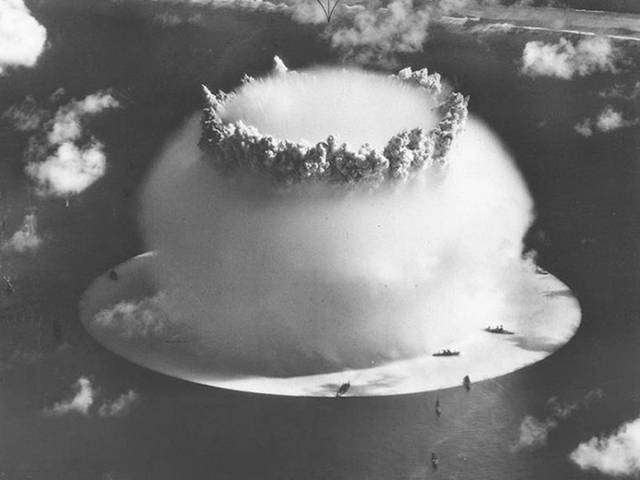“Ours is a world of nuclear giants and ethical infants. We know more about war than we know about peace, more about killing than we know about living.”
–Omar Nelson Bradley
It is hard to believe how the use of one atom can cause catastrophic effects for all forms of life on this earth. With the development in nuclear weaponry, many tests were carried out to test the strength of the explosives along with the types and duration of the effects in remote areas, away from most of civilisation.
Countries like the United States can, perhaps, be considered as trendsetters due to their ideas of exploring nuclear weaponry underwater in realisation of the long term effects it had on land. The first nuclear test underwater, by the name of The Baker, was carried out in Bikini Atoll in 1946. After its detonation, a large bubble of hot gas described as a fire ball exploded to the surface, shooting water 6000 feet high. A large cloud of condensed radiation was suspended over the area for an extended period of time. It was reported that many of the target ships that surrounded the region were pulverised, leaving only to our imagination the state of the marine life, that had probably been obliterated, at that specific time.
Following the tests by the US, France carried out around 210 tests in the South Pacific from 1966 to 1996 leaving behind around 3200 tons of radioactive waste that sank to the depths of a 1000 meters. Still to this date not only do the people suffer from increased risks of cancer, but the effects of the consumption of the same fish that lives in the radioactive waters are over looked by many over the world. Not only are we, through such acts, decreasing the life span and species of marine life but are also making them a subject to health hazards along with putting ourselves at risk as we live in the very same contaminated environment.






